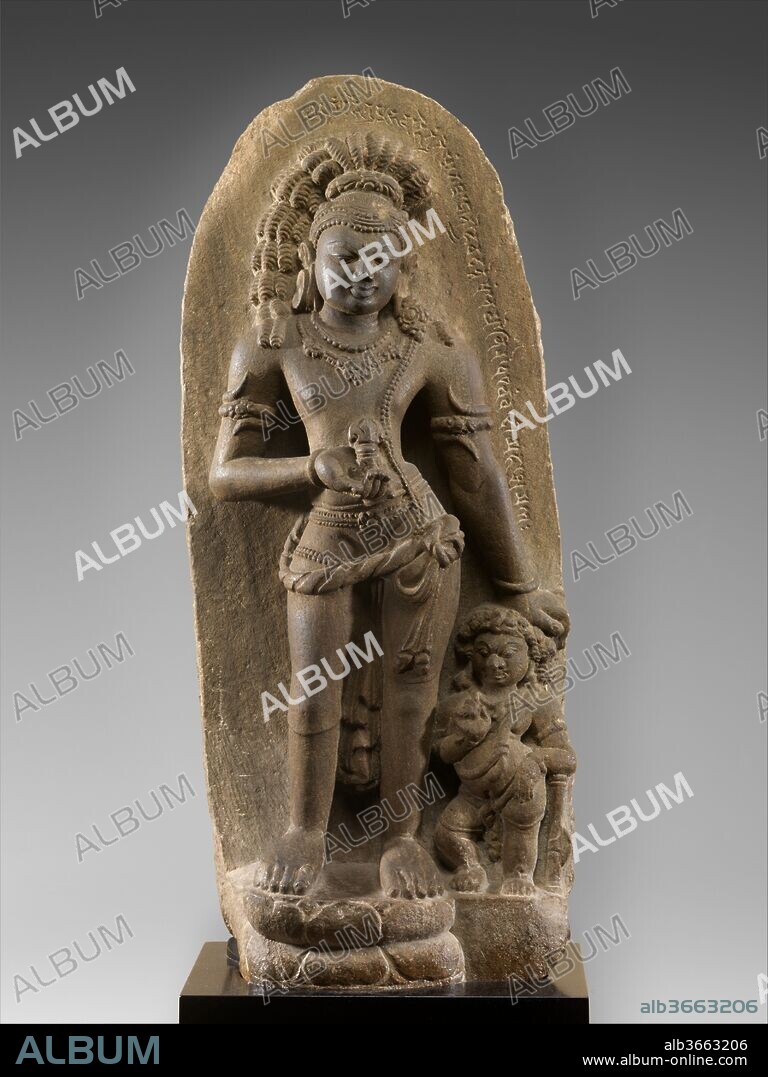alb3663206
Vajrapani, the Thunderbolt-bearing Bodhisattva

|
Zu einem anderen Lightbox hinzufügen |
|
Zu einem anderen Lightbox hinzufügen |



Haben Sie bereits ein Konto? Anmelden
Sie haben kein Konto? Registrieren
Dieses Bild kaufen.
Nutzung auswählen:

Titel:
Vajrapani, the Thunderbolt-bearing Bodhisattva
Untertitel:
Siehe automatische Übersetzung
Vajrapani, the Thunderbolt-bearing Bodhisattva. Culture: Eastern India (Bihar, probably Nalanda). Dimensions: H. 30 7/8 in. (78.4 cm); W. 23 13/16 in. (60.5 cm); D. 6 in. (15.2 cm). Date: 7th-early 8th century.
This is a rare representation of the Buddhist savior Vajrapani from the seventh century or soon after. Vajrapani, the "holder of a thunderbolt" (vajra), shares his origins with the Vedic deity Indra, god of storms. Early in Buddhist iconography, the thunderbolt scepter assumed an independent meaning associated with clarity of pure thought leading to enlightenment. Vajrapani stands flexed holding the vajra in his raised hand, the other resting on the dwarf attendant with a club-axe who seemingly mimics his gestures. Vajrapani has long, unkempt dreadlocks that imply an esoteric aspect to his personality, evocative of Shiva; the large, asymmetrical ear ornaments only strengthen this association, as does the gana-type dwarf guardian. He is best understood as a purusa, a personification of Vajrapani's "weapon," a visualization practice very much in vogue in this period in Hindu iconography, especially in Kashmir. A Sanskrit inscription in proto-Bengali script extends down one side of the stele.
Technik/Material:
PIEDRA
Museum:
Metropolitan Museum of Art, New York, USA
Bildnachweis:
Album / Metropolitan Museum of Art, NY
Freigaben (Releases):
Model: Nein - Eigentum: Nein
Rechtefragen?
Rechtefragen?
Bildgröße:
3202 x 4268 px | 39.1 MB
Druckgröße:
27.1 x 36.1 cm | 10.7 x 14.2 in (300 dpi)
Schlüsselwörter:
 Pinterest
Pinterest Twitter
Twitter Facebook
Facebook Link kopieren
Link kopieren Email
Email
